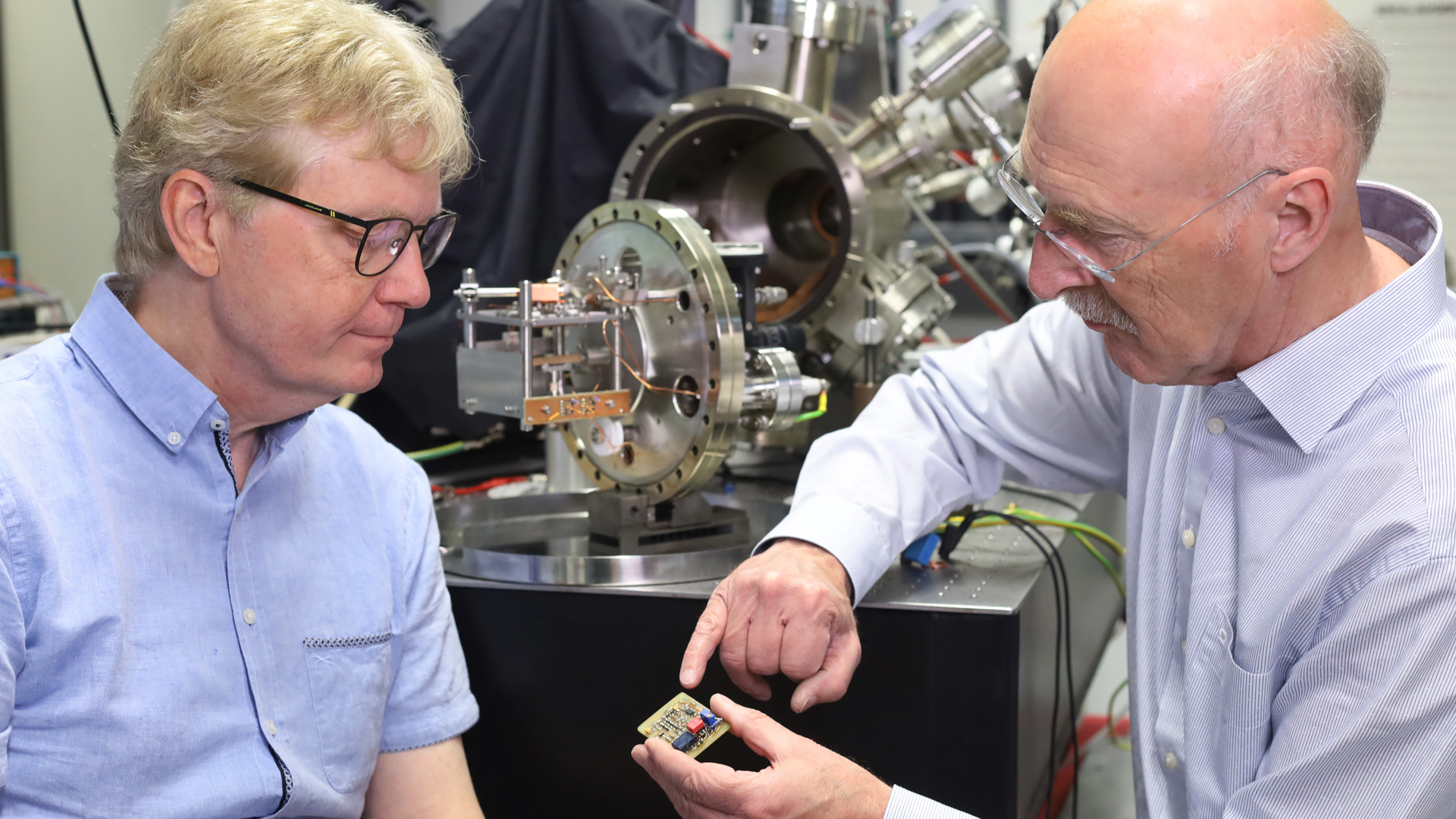
Contact electrification project
Why so charged?
- von Ulrike Bohnsack
- 31.05.2023
If two materials come into contact, an electrostatic charge transfer can occur. It may cause small sparks during discharging. Everyone has experienced this phenomenon when, e.g., touching a door handle. Such contact triboelectricity can unintentionally trigger sparks and explosions in dusts and granulates, but it can also be used to generate electricity with sports textiles, for example. Surprisingly, the basic mechanisms behind the phenomenon are still unresolved. Research in an experimental physics group at UDE contributes to the understanding of the effects. A project on charge transfer is now being funded by the German Research Foundation (DFG) with over 250,000 euros for three years.
Microscopic contact between materials often leads to charging. If there are many contacts, very high voltages of several kilovolts can be generated. "Although this has been known for a long time, it is still unclear what kind of charged particles are transferred during contact. They could be individual electrons, atoms (ions) or entire molecules consisting of several atoms," explains Prof. Dr. Rolf Möller, who is leading the project together with his colleague Prof. Dr. Hermann Nienhaus.
To get a better understanding one would have to analyze the exact moment when the charge is transferred from one material to the other. "This happens rather fast, namely in a few millionths of a second or even faster," says Prof. Nienhaus. The process cannot be detected with conventional devices. That's why the research group has developed new electronic amplifiers that measure very small charges in microseconds.
Thanks to this technique, it is now possible to observe the contact electrification of a sphere with high temporal and charge resolution: a sphere with a diameter of one millimeter is dropped freely onto a plate on that it bounces several times. The research group is experimenting with different sphere and plate materials – including metals and insulators – and changing the surrounding atmosphere. "Our experiment is being conducted with very high precision and a charge and time resolution that has never been seen before," Möller emphasizes. "Our goal is to fundamentally understand the physical mechanisms of charge transfer. Eventually, this would allow contact charges to be avoided, controlled or even externally adjusted in the near future."
Picture: Prof. Hermann Nienhaus (l.) and Prof. Rolf Möller (r.) in front of the experimental apparatus with an electronic charge amplifier.
Further information:
https://www.uni-due.de/ag-moeller/kontaktelektrifizierung.php
Prof. Dr Rolf, Möller, Experimental Physics, Tel. 0203/37 9-4220 rolf.moeller@uni-due.de
Prof. Dr Hermann Nienhaus, Experimental Physics, Tel. 0203/37 9-3154, hermann.nienhaus@uni-due.de
Editorial office: Ulrike Bohnsack, Tel. 0203/37 9-2429, ulrike.bohnsack@uni-due.de
